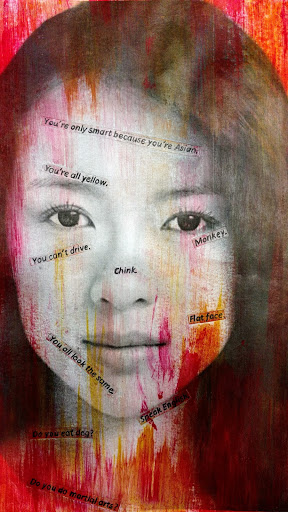The success or struggle of Teaching for Artistic Behavior (TAB) hinges on relationships. Successful TAB teachers trust their students to find and use their own ideas and believe that those ideas are worth pursuing in the first place. Students, on the other hand, have to trust their teacher enough to risk the vulnerability of sharing things that are important to who they are and take on the risk of failure as they develop their own art ideas without the safety of a teacher-directed lesson to follow. They need to be self-motivated and self-reliant in order to independently envision ideas for artwork and pursue them throughout the creative process. This is a big ask for our students and takes effort to put in place, but the payout of increased engagement and learning is more than worth it. To establish relationships that support TAB, teachers must consciously cultivate trust with each individual student through the building of positive classroom culture and the establishment of partnerships that support this independent, individualized, and learner-directed instructional practice.

The importance of relationships to TAB has deep correlations to Culturally Responsive Teaching. CRT can be defined as “ a pedagogy that recognizes the importance of including students’ cultural references in all aspects of learning” (The Education Alliance). This pedagogy was developed though the work of scholars like Dr. Gloria Ladson-Billings in the early 1990s, who practiced providing access to learning in schools by engaging students through culturally relevant connections to content.
Providing opportunity for students to use culture as a lens to process information deepens their learning, connection, and engagement. TAB has embraced similar thinking since its start in the 1970s.
When TAB teachers ask students to develop their own ideas for art, we are asking them to connect their knowledge of art-making tools, materials, and processes with their personal culture – the knowledge, beliefs, values, and ideas that make them who they are.
To learn in any setting, students first have to first feel physically and emotionally safe. This is not an opinion – it’s brain science. In her book Culturally Responsive Teaching and the Brain, Zaretta Hammond writes “The amygdala acts as our guard dog, trained to prepare the body for flight, fight, freeze or appease when anything threatens our physical or social safety.” To make our students feel safe enough for their brains to learn, teachers first need to understand and acknowledge that not all students feel safe at school. The discrepancy in achievement between racial and socio-economic subgroups is proof of this, as is the increased likelihood of suspension and expulsion for Black and Brown students.
Schools are in need of systemic change, which is often outside of our control. Still, individual teachers can take steps to make sure all students learn in their classrooms by working to understand racism, challenge prejudice, recognize stereotypes and microaggressions, while also working to make sure that the curriculum moves beyond the white-centered content that is the norm in many places. We need to ask ourselves whose perspective and identity are included in our classrooms and whose are left out, then work to make meaningful changes. We also need to create social safety by creating a classroom culture that supports risk-taking, collaboration, and learning from failure. This social safety can be created through establishing mutual trust and respect, as well as emphasizing the value of process through feedback, instruction and grading. When teachers model trial and error as an intrical part of acquiring new knowledge, students are empowered to experiment and make mistakes.

Relationships that support learning are central to TAB. Because of the highly individualized nature of TAB instruction, a trusting relationship between teacher and student, with the teacher as the facilitator and the student leading the direction of their own learning, is foundational. Zaretta Hammond calls this a “learning partnership” and explains how the teacher assumes the role of “warm demander” to make it successful. Warm demanders have high expectations and hold ALL students accountable for them while being empathetic, kind, and providing the support that helps them understand and grow their capacity for learning. In the TAB studio, these coaching conversations are centered around things like how to select materials, strategies for finding ideas, and how to go through the cognitive process of problem-solving when challenges arise. Thoughtful signage that illustrates processes and procedures assists with this, as does the intentional teaching of the cognitive work required to envision and create. When these learning partnerships are not successful or not in place, TAB teachers must ask themselves why and work intentionally to put them in place. One example of how to accomplish this is by assessing the type of student need and the level of necessary support through observation, then putting targeted interventions in place (see Levels of Support in the Secondary Choice Studio).

Relationships are the key to teaching that produces lasting learning. By reading Zaretta Hammond’s book, TAB teachers can deepen their understanding of how to form beneficial learning partnerships and provide individualized, targeted support that improves learning outcomes, as well as understanding the brain science that supports CRT. The TAB community would benefit enormously by working to understand how racism creates barriers for students and staff in schools, which is another essential component of CRT. Culturally Responsive Teaching pedagogy has huge potential to augment and support Teaching for Artistic Behavior as we aim to ensure every student thrives and has the opportunity to create with their unique voice. TAB is relationships build on trust, respect and understanding. If we are not intentional about learning how to build those connections across race and culture we just aren’t doing our jobs.



